Written by John le Carré, produced by John Kershaw and directed by Alan Cooke. Broadcast on ITV at 8.30pm on 29 June 1970.
By Joseph Oldham
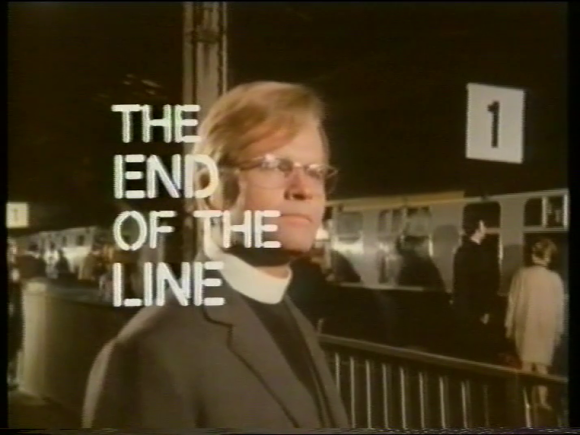
Readers of the recently published book A Private Spy: The Letters of John le Carré (2023) may have been intrigued by a brief reference to a letter that the acclaimed spy novelist wrote to John Margetson, a former colleague from the Secret Intelligence Service (SIS), on 15 June 1969. Outlining several creative projects in development, le Carré briefly notes that he had ‘finished a 1½ hour television play the other day.’[1] But although A Private Spy elsewhere provides copious footnotes to explain various obscure references, here there is none. What, we might wonder, was the play about? And was it ever produced?
A little more detail may be found in Adam Sisman’s 2015 biography of the author, which tells us that Thames Television broadcast le Carré’s ‘hour-long drama End of the Line in its “Armchair Theatre’” slot, after it had been offered to the BBC and unexpectedly declined’.[2] The brevity of this mention contrasts with the much more extensive attention that Sisman gives to le Carré’s advisory and scripting roles on various screen adaptations of his novels, and only poses more questions. What motivated le Carré, by then an internationally successful novelist, to turn to writing a television play? And what happened between the Margetson letter and the programme’s transmission that caused this play to lose 30 minutes of material?
As far as I have been able to determine, le Carré himself never mentioned The End of the Line in the numerous interviews and articles where he looked back over the appearance of his work on film and television (to the point where the Margetson letter may be the only publicly available acknowledgement of its existence in his own words). The play’s near-erasure is especially striking given how the author’s subsequent relationship with British television drama has been celebrated, a narrative which typically sees le Carré burst onto the medium to immediate triumph and acclaim with the serialised adaptation of Tinker Tailor Soldier Spy (BBC 2, 10/09/79-22/10/79). The End of the Line, however, complicates this narrative, giving us a glimpse of an earlier and different incarnation of le Carré on television.[3]
The rest of the Margetson letter allows us to link the writing of The End of the Line to a complex moment in le Carré’s career. On the one hand, he mentions his early progress on the novel which would subsequently become The Naïve and Sentimental Lover (1971), a unique effort in his bibliography to break away from espionage topics and write a more purely ‘literary’ work. This indicates how Le Carré was in a mood of artistic experimentation and interested in embracing new artistic influences and forms.
On the other hand, he describes his unsuccessful efforts to persuade film directors, including Karel Reisz, to take on a screenplay he had adapted from his most recent novel, A Small Town in Germany (1968). During this period, le Carré had also developed an interest in filmmaking and screenwriting. But with another adaptation of an earlier novel, The Looking Glass War (1965), already rejected by Jack Clayton, his efforts to enter the film industry looked to be increasingly floundering.
It therefore seems no coincidence that this was the moment when le Carré turned to television, with its reputation as a ‘writer’s medium’. But unlike his film screenplays, The End of the Line was no adaptation – indeed, le Carré does not seem to have been interested in offering his novels to television producers until the long-form serial became a more prominent vehicle for drama during the 1970s. Instead, this was an original piece, conceived around a more constricted time-scale and geography.
The play opens at Edinburgh Waverley railway station, where a mysterious young clergyman, the Rev. Paul Bagley, arrives late to catch a train to London. Producing a skeleton key, he enters a private compartment and sits opposite its sole occupant, Alfred Frayne, a haggard, middle-aged civil servant in a state of great anxiety. Soon it becomes apparent that Frayne, an employee of an atomic research centre, has forged an indiscreet relationship with a mysterious figure known as ‘Charlie’ whom he first encountered via a Radio Moscow Russian-language course. Bagley is all too willing to offer Frayne a sympathetic ear, and indeed seems already to know a surprising amount about his travelling companion…
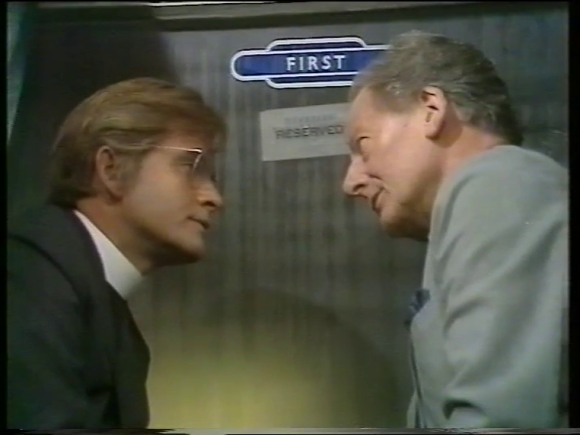
After the opening at the station, most of the play takes place within the train compartment with Bagley and Frayne as the only two speaking characters. On its transmission, some critics noticed an obvious influence on this scenario. In a Sunday Times article, entitled ‘Spying in Pinterland’ (28 June 1970), Elkan Allan found that the ‘elliptical, ambiguous, occasionally inscrutable’ dialogue read like ‘a cross between Pinter and Chesterton’. Writing in the Daily Telegraph (30 June 1970), Sylvia Clayton observed that ‘the struggle was, as often in Pinter plays, for territorial subjugation of the will’.
For a ‘serious’ writer entering the terrain of televised studio drama, Harold Pinter was certainly an obvious model, given that his works had been regularly produced as television plays during the 1960s. As Billy Smart observes, studio drama relies upon ‘an interior form in which the room is paramount – as an environment that shapes and defines understanding of events that occur within it’. Combined with the rhythm of multi-camera direction, this proved particularly congenial for Pinter’s plays ‘where rooms can have territorial importance as spaces of both sanctuary and violation and which famously developed a new syntax for dialogue, both demotic and elliptical, and dependent on withheld information’.
Of course, in his novels, le Carré had established his own flair for long interrogation sequences in which power relations are negotiated. This, in turn, had its roots in his past work in MI5 in the late 1950s, when he had conducted interviews for ‘positive vetting’ purposes. One can therefore easily imagine le Carré, seeking an approach for his television debut, identifying the ‘Pinteresque’ studio drama as a distinctively televisual form that would dovetail well with his own literary strengths and interests.
The result was a play in which, as Philip Purser put it in the Sunday Telegraph (5 July 1970), ‘agent faces double-agent in a sort of cerebral strip-poker, each player peeling off a layer of cover until one psyche is naked’. But whilst the wider world-building of le Carré’s novels typically situated his interrogations within a stronger sense of narrative, and their institutional and ethical contexts, here the author more fully embraced the elliptical, ambiguous and often menacing territory of Pinter.
Production history
In the summer of 1969, le Carré’s script was submitted to the BBC’s The Wednesday Play series – but only to be rejected. In a letter to le Carré’s agent Carol Smith on 14 July, Script Editor Shaun MacLoughlin explained that he, and producer Graeme MacDonald, ‘both found it very cleverly written, and I found it interesting to me personally; but we had to agree that it would not involve the very large audience we are aimed at’. This might have seemed an odd thing to say to an internationally best-selling author with proven popular appeal, but MacLoughlin voiced his feeling that the play was ‘something the author has been longing to do for a long time between entertaining large audiences (and why not)’.[4] In other words, whilst MacLouglin acknowledged le Carré’s ability to connect with large audiences as a novelist, he and MacDonald suspected that he had approached this television play as merely an experimental side-project, being insufficiently mindful of television’s own need for a wide audience reach.
In fact, MacLoughlin may not have been telling the entire truth. By this time, The Wednesday Play was committed to producing Double Bill (26 November 1969), a combined remake of two short Pinteresque television plays by Johnny Speight. One of these, The Compartment (first produced in 1960), concerned a power struggle between a businessman (Joby Blanshard) and a mysterious eccentric (Marty Feldman) in a railway carriage compartment.[5] It seems likely that the clash of subject-matter may have worked against The End of the Line – although, if so, it is surprising that this potentially more diplomatic justification for rejecting le Carré’s play was not employed in the correspondence.
Meanwhile at Thames Television, John Kershaw had been appointed producer of Armchair Theatre in May 1969 and was by this time known to be seeking plays for its 1970 series. Allan (in the Sunday Times) described how le Carré offered them The End of the Line and, ‘as it was by a famous author, was about spies and had a simple set with only two characters, it was obviously attractive and they bought it’. Notably Kershaw had recently served as Associate Producer on the second series of Callan (ITV, 1967-72), a spy drama heavily indebted to the works of le Carré, which had emerged as a major ratings success in 1969. This may therefore have particularly attuned Kershaw to the possibilities of producing a work by le Carré himself.
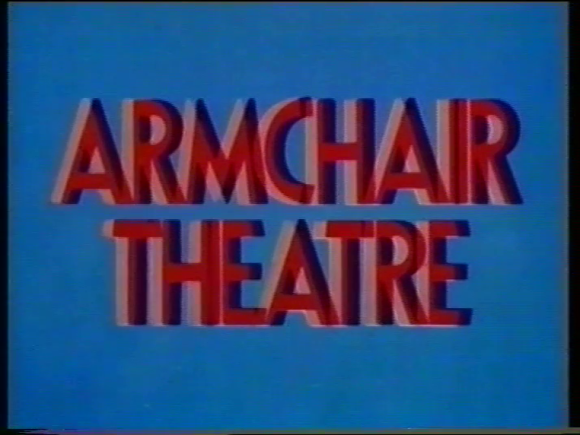
However, a difficulty arose with the length. Armchair Theatre plays were generally under one hour in length, making le Carré’s intended 90-minute piece too long. Faced with the possibility of Thames shelving the play, le Carré consented to cuts, and the final production would run to 54 minutes (minus commercials). Without access to the original script, it is difficult to tell what was lost, but it is possible that the intended flow of the piece may have been damaged at this point. On the production’s transmission, Purser (in the Sunday Telegraph) complained of finding ‘the shifts in ascendancy too arbitrary’, whilst Clayton (in the Daily Telegraph) was confused by the apparently ‘inexplicable’ shift in power that occurred during the commercial break now bisecting the play.
Indeed, whilst Pinter’s ‘comedies of menace’ were typically characterised by a slow escalation, the central encounter of The End of the Line, at least in its cut-down version, escalates to a peak of hysteria at a surprisingly early point. Strikingly, it takes less than eight minutes for Frayne to begin accusing Bagley of working for MI5 (which Bagley initially laughs off). One might imagine le Carré, realising that his authorship would cue the audience to expect an espionage twist, setting out to neutralise it at an early point, only to return to it later. The result, however, is an oddly unbalanced structure, with the play struggling to find anywhere further to escalate.
The immediate atmosphere of heightened tension is, however, given an explanation when it is revealed that Frayne has already been subjected to a campaign of ‘psychological disintegration’ by unknown forces. This process, which includes the disappearance of his prized roses and the inexplicable shift of his bedroom from one part of his house to another, brings a surreal touch uncharacteristic of le Carré and more reminiscent of The Prisoner (ITV, 1967-68), albeit that these events occur offscreen.
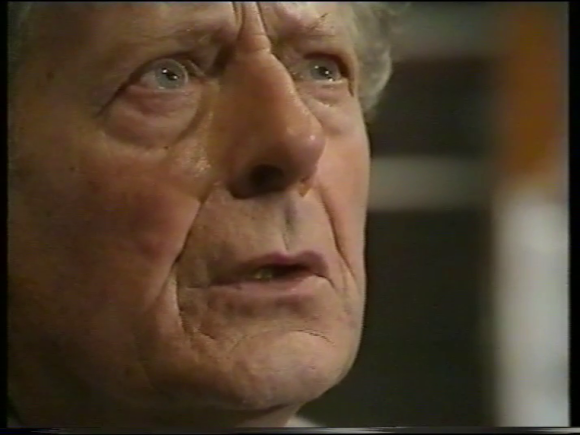
The play was directed by Alan Cooke, whose previous work for Armchair Theatre encompassed over twenty plays dating back to 1959 – and includes several released on Network’s Armchair Theatre Archive DVD collection: James Brabazon’s The Thought of Tomorrow (11 October 1959), Norman King’s The Fishing Match (19 August, 1962), and Andrew Sinclair’s The Chocolate Tree (27 October 1963). In these earlier years, Armchair Theatre (then in the hands of Thames’ predecessor company, ABC) had been at the cutting edge of television drama, shooting live plays in depth with highly mobile cameras and expressive lighting, creating an unusually dynamic and three-dimensional house style.
A highly prolific television director, sought after for his technical skill, Cooke had also worked for many other single play strands at the BBC and ITV during the 1960s. His versatility is well illustrated by his direction of John Osborne’s The Right Prospectus (22 October 1970) for the BBC’s Play for Today series in the same year. Unlike his prior live studio work, The Right Prospectus, in which a middle-aged couple inexplicably enrol into a public school, was part of the emerging movement towards shooting dramas entirely on film and location, and Simon Farquhar highlights how Cooke captured the play’s surreal quality without overindulgence – an approach that would certainly also suit le Carré’s script.

But with the exception of the filmed station sequences and external shots of the train, The End of the Line was a more traditional play than The Right Prospectus, recorded in an electronic studio – and essentially limited to a single small set representing the compartment. Veteran Shakespearean actor Robert Harris was cast as Frayne, whilst opposite him as Bagley was up-and-coming actor Ian Holm who had recently won a Tony Award for his role in the 1967 Broadway production of Pinter’s The Homecoming.
In the studio, Cooke drew on the longstanding strengths of Armchair Theatre, with some highly expressive lighting – particularly memorable is a moment when a power cut plunges the carriage into darkness just as Frayne realises, after initial deflections, that his initial instincts were correct and there is something suspicious about Bagley. ‘Who are you?’ he whispers hoarsely, illuminated by only a single light source from above, leaving most of his face in darkness. Furthermore, Cooke seems to have approached the play – which in lesser hands might have been static and visually monotonous – as a distinct technical challenge. Notably, the range of coverage is more than a multi-camera set-up could possibly have captured with a static ‘box’ set, indicating that designer Stan Woodward’s apparently simple design for the compartment will have had parts that were removable as required.
Reception
The End of the Line was networked by ITV on Monday 29 June at 8:30pm as the fourth episode in a 16-episode Armchair Theatre run which also included plays by notable writers such as Emanuel Litvinoff, Fay Weldon and Colin Welland. It was watched in 5.15 million UK homes; so, despite its subsequent ‘forgotten’ status in le Carré’s biography, this was hardly a marginal cultural text at the time.
The appearance of le Carré on television generated a degree of press interest. The listing for the play in the TV Times declared that ‘the same deep characterisation and taut, story-telling as portrayed in The Spy Who Came In From The Cold [1963] make this not one to be missed by those who like their espionage as believable and as spine-tingling as a douche of cold, clear water’. James Thomas, previewing the play for the Daily Express (30 June 1970), mused that it was ‘not often’ that TV tempted ‘a successful millionaire writer like John Le Carré… into its drama market’, anticipating ‘the work of a master of espionage stories in a TV world where the spy story is usually mediocre’.
One voice oddly missing from the press coverage, though, was le Carré himself who (in contrast to his visibility whenever publishing a new novel) seems to have played no role in promoting the broadcast. For its author, The End of the Line seemed almost forgotten before it was even shown and possibly suggests a loss of interest in the work or a dissatisfaction with its outcome as a result of script edits.
The play received a mixed critical reception, particularly with regards to the merits of le Carré’s script. A positive review by Henry Raynor in the Times (30 June 1970) praised ‘the twists and turns of Mr. le Carré’s remarkably pointed, literary dialogue’ as integral to the play’s success. Others, however, found the Pinteresque scenario somewhat clichéd, with Purser (in the Sunday Telegraph) complaining of an ‘unnatural isolation’ typical of ‘too many pretentious TV dramas’. Clayton (in the Daily Telegraph) also considered the confinement of the drama to a single railway carriage to constitute ‘a rather tired device on television.’ And, for all his initial enthusiasm, Thomas (in the Express) admitted to finding the central duel ‘a little tiresome’ and, despite the edits already made to the script, considered that the play ‘tended to drag just as much as some of the trains from Edinburgh to London’ and wondered if it might have worked better as an even shorter piece. For Peter Black of the Daily Mail (30 June 1970), ‘these glum fantasies seemed to me to be appealing to a weird and unhappy corner of the mind, and I have to admit that my imagination couldn’t respond to them’.
In a review for the Guardian (30 June 1970), Nancy Banks-Smith indicated her appreciation of le Carré, declaring that ‘if I had not been reading one of his books until four in the morning, I might have been in better shape to appreciate the play’. The End of the Line, however, she said ‘was dense, disturbing and I did not like it. But possibly I was not supposed to like it. Probably I was meant to be disturbed’. Indeed, confusion was a common response, with critics notably divided as to how to interpret the enigmatic Bagley. Some (such as Henry Raynor and James Thomas) saw him straightforwardly as an MI5 spy-catcher plugging a national security leak; others (including Elkan Allan and Nancy Banks-Smith) were less certain, mindful of an earlier hint in the play that he might alternatively be a Soviet operative mounting a clean-up operation.
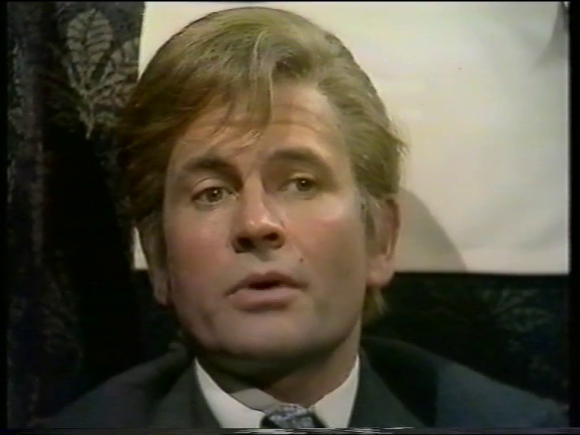
Yet for others, anticipating the discourse that would later surround Tinker Tailor, confusion was not necessarily a bad thing. John Carey, for example, of the Listener (July 1970) found that the mystifying dialogue made the play more gripping ‘since you could only conjecture which of the travellers would fly off the handle next’. And, overall, there was a broader consensus in favour of the production and acting. For Clayton, ‘this was an excellent production’ with ‘sustained, serious acting by Robert Harris and Ian Holm’, whilst, for Carey, ‘Ian Holm and Robert Harris acted so well that a plot was the last thing they needed’.
Legacy
Although his biographer Sisman indicates that le Carré also proposed a series of four television plays entitled The Face of Conflict around this time, The End of the Line would ultimately mark the end of le Carré’s interest in original television writing. This was not quite the end of the line for the play itself, however, which three years later enjoyed a remake for West German television entitled Endstation (ARD, 23 January 1973). Whilst it was not unknown for British television plays to be remade in Western European countries, it is easy to suspect that le Carré, a well-connected Germanophile, may have played a role in arranging this himself (although the translation is credited to Hubert von Bechtolsheim and Marianne de Barde). Notably Endstation runs 20 minutes longer than The End of the Line, and thus likely represents le Carré’s original vision (or at least some of it) before the cutting undertaken at Thames.
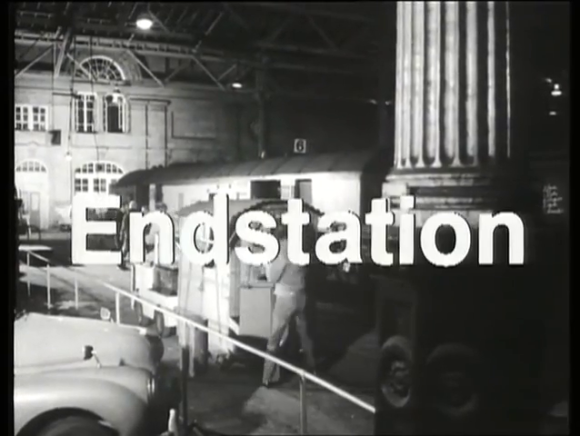
More broadly, however, this moment of experimentation in le Carré’s career had effectively hit the buffers following the poor critical reception of his novel The Naïve and Sentimental Lover (1971). With the more successful Tinker Tailor Soldier Spy (1974), le Carré would get back on track as a spy writer whose preferred medium was the novel. The 1979 television adaptation of Tinker Tailor would, in turn, establish le Carré’s more enduring relationship with television drama as that of a prestigious adapted author rather than an original playwright.[6] Shot all on film and on location, this serial is visibly a very different production to The End of the Line. (Indeed, with its emphasis on faded elite institutions and wintry rural backdrops, it ironically bears more visual resemblance to Cooke’s work on The Right Prospectus).
Yet in other respects, Tinker Tailor illustrates how le Carré’s initial instinct for how television could serve his writing was correct. The serial’s producer Jonathan Powell later highlighted the importance the production placed on keeping faith with the length of ‘these really fantastic interrogation scenes’, highlighting especially how George Smiley’s (Alec Guinness) meeting with Jim Prideaux (Ian Bannen) in Part Five amounts to ‘a whole episode effectively of two people talking to each other’.[7] Of course, as we have seen, this was not the first time that a le Carré two-handed conversation had formed the core of a television instalment of 45 minutes or more, yet Tinker Tailor represents a maturing of this approach. Here the length of the conversation arises from, as much as its content, a willingness to let it breathe with a slower pace, in comparison to the relentless high tension of The End of the Line.
But The End of the Line would later enjoy a revival twenty years after transmission when, without any public acknowledgement, le Carré quietly and belatedly reworked its narrative into one of his books. The Secret Pilgrim (1990) is an episodic novel in which Ned, a first-person narrator, recalls incidents from his long career in the Secret Intelligence Service (SIS), these forming a sequence of interconnected short stories. Chapter Eleven sees Ned interrogating Foreign Officer cipher Cyril Arthur Frewin, whose name, background, personality and even speech patterns strongly recall the play’s Alfred Frayne. Much of the power struggle between the characters plays out like that in the 1970 play, albeit in Frewin’s home rather than on a train.
Yet adapting the story into first-person prose with a sympathetic narrator has a transformative effect. Unlike Bagley, Ned’s service to SIS is never in doubt. The sinister and surreal ‘psychological disintegration’ techniques are absent, replaced by a lengthy preamble explaining the more banal methods by which the service assembles its intelligence on Frewin. And with Ned’s interior thoughts continually parallelling Frewin’s exploitation by his Soviet controller with his own romantic difficulties, the story loses much of its menace to become a sadder story of a communion ‘between damaged souls’.[8]
In the long term, then, The End of the Line was not quite the creative terminus it might have appeared. Nonetheless, the process of integrating it into le Carré’s literary oeuvre entailed a taming of the experimental, ambiguous and menacing elements of this author’s uncharacteristic venture into the Pinteresque twenty years earlier.[9]
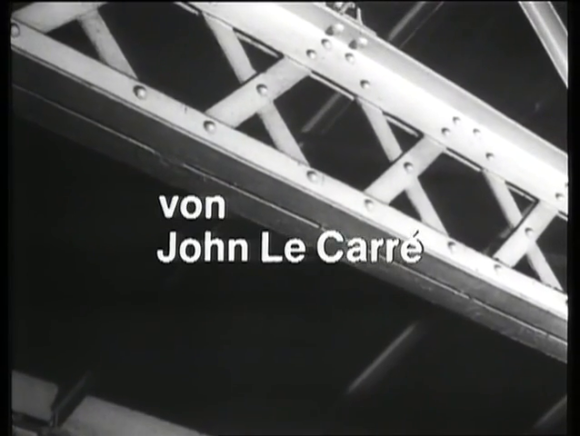
[1] Letter from John le Carré to John Margetson, 15 June 1969. In Tim Cornwell (ed.), A Private Spy: The Letters of John le Carré. Penguin, 2023: 164
[2] Adam Sisman, John le Carré: The Biography. Bloomsbury, 2015: 289.
[3] For a more extensive overview of how le Carré’s work has been produced on British television, encompassing rarities such as The End of the Line, see Tom May’s expansive account.
[4] Letter from Shaun MacLoughlin to Carol Smith, 14 July 1969. [BBC Written Archives]
[5] My thanks to Ian Greaves for drawing my attention to this.
[6] Later Le Carré would, however, be involved in scripting the adaptations of Smiley’s People (BBC 2, 1982) and A Murder of Quality (ITV, 1991))
[7] JO interview with Jonathan Powell, 26 July 2012.
[8] John le Carré, The Secret Pilgrim. Hodder & Stoughton, 1990: 259.
Joseph Oldham is an Associate Professor in Communication and Mass Media at the British University in Egypt and the author of Paranoid Visions: Spies, Conspiracies and the Secret State in British Television Drama (2017).
3 replies on “Armchair Theatre: The End of the Line (1970)”
[…] le Carré briefly notes that he had ‘finished a 1½ hour television play the other day.’[1] But although A Private Spy elsewhere provides copious footnotes to explain various obscure […]
Good evening Thought you might be interested in this review of ‘End of the Line’ in The Stage & Television Today (attached) – generally positive, although it’s the acting and direction which receive most of the plaudits, rather than the writing. Interestingly, the reviewer describes it as “Le Carre’s truncated play”, which suggests either that it was known at the time to be a shortened version of an earlier script, or that it was very obvious that it had been cut to fit a particular time slot (and maybe not done very well!) (I only happen to have this cutting because there’s a review by my father on the same page.) regards Mike Campbell
>
Thank you very much for such an interesting comment! Yes, the fact that it was truncated was openly talked about – I’ve drawn some of my production information from the Sunday Times review, which gives a little potted history of its development under John Kershaw (although doesn’t mention the BBC rejection). It’s not quite clear who the source is, though, as no participants are quoted.
Might it be possible for you to email me The Stage & Television Today review? I can’t seem to see attachments on here. I’m really interested in collecting as much press coverage as I can, as I’m hoping to dig a little deeper into these early le Carre oddities going forward.